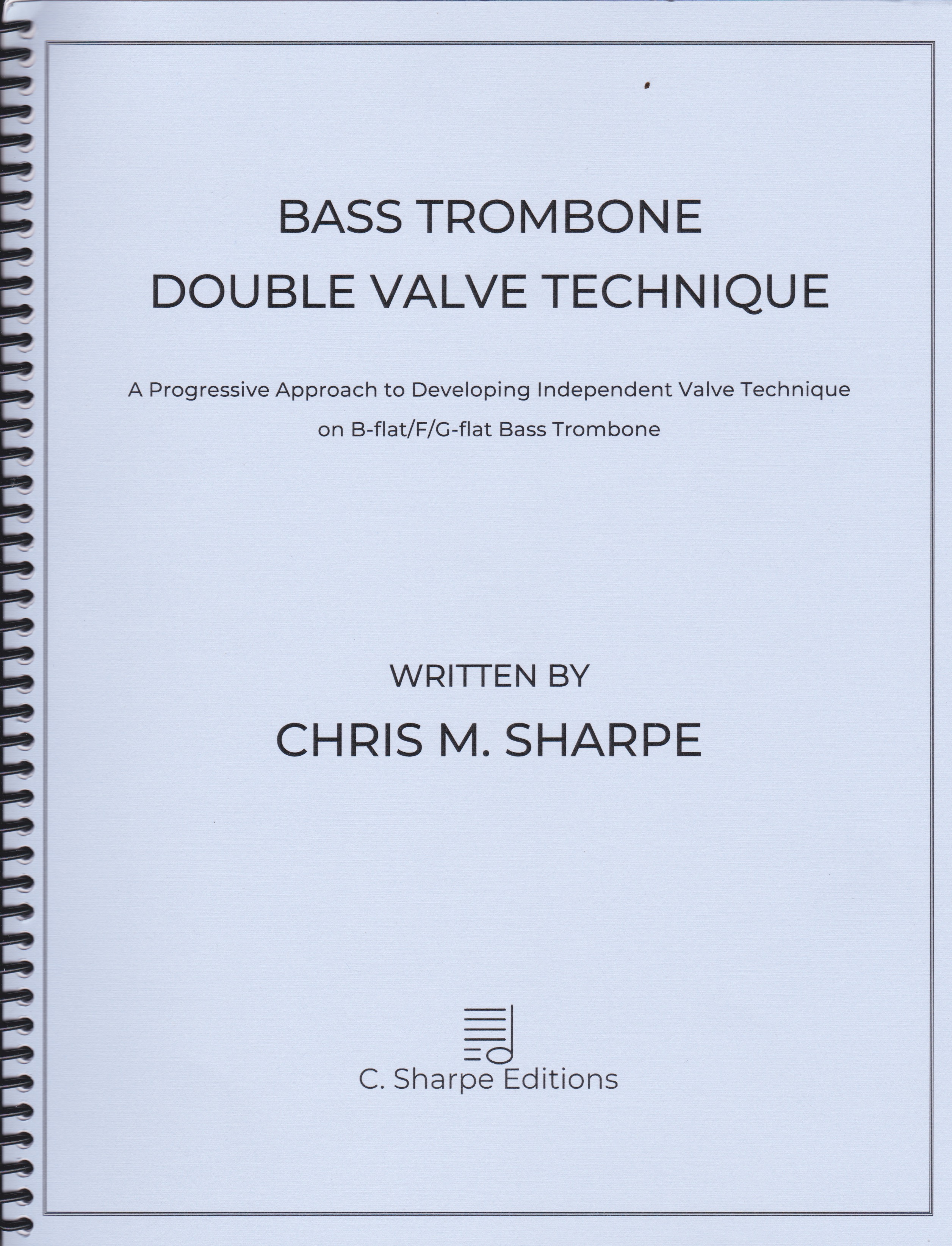Chris M. Sharpe
 Bass Trombone Double Valve Technique:
Bass Trombone Double Valve Technique:
Bass trombone
No place, , United States
Publisher: C. Sharpe Editions
Date of Publication: 2019
URL: http://www.csharpeeditions.com
Spiral bound method book. 114 pages.
Primary Genre: Study Material - method
 Bass Trombone Double Valve Technique:
Bass Trombone Double Valve Technique: Bass trombone
No place, , United States
Publisher: C. Sharpe Editions
Date of Publication: 2019
URL: http://www.csharpeeditions.com
Spiral bound method book. 114 pages.
Primary Genre: Study Material - method
The debate over the virtues of the two bass trombone valve systems and their tuning—dependent vs. independent (in-line)—is like the one that rages over Macintosh® vs. Windows® computer operating systems. Passions run high, but emotions aside, it simply comes down to a matter of preference, and the argument for or against one or another option is not a matter of better or worse, but rather that the options are simply different. Independent valves rule the marketplace although the virtues of the dependent system are extolled by many players including this author. One’s choice does not rise to the level of a moral decision, so players are wise to try all options and then choose the setup that seems most comfortable. Vive le différence. Chris Sharpe, a bass trombonist in the Dallas area, has put together a book of exercises—what he calls a “progressive approach”— to aid players in understanding and utilizing the B-flat/F/G-flat independent valve bass trombone. As he acknowledges in the book’s opening page, his is not the first to do this, with publications by Alan Raph (1969, 1992), Eli Aharoni (1975 and many later editions), and Blair Bollinger (2007) offering their take on the subject. Sharpe opens his book with a page that discusses how to tune the instrument. This has a particular bit of practical advice that should be shouted from every mountain top: tune the F-attachment so you can play F in tune in first position. What follows are sensible and systematic exercises on patterns, scales, and arpeggios, the building blocks of all music. The final section of etudes helps the player integrate what has been learned earlier, but the etudes are only in major keys; minor etudes would have been useful as well. The search for a helpful bass trombone valve nomenclature system has proven as elusive as the Holy Grail, and I am not persuaded the latest idea which is employed in Sharpe’s and some other recent publications—using the Greek characters Γ (gamma) and Δ (delta) to indicate use of the G-flat valve or combined F/G-flat valve (D)—is an improvement over previous attempts. This injects a visually foreign concept to the musical environment, and the Γ symbol looks, at glance, enough like a capital letter “T” (which many players and teachers use to indicate to tongue a note or use the trigger) to require more than a little getting used to. Sharpe also relates the position of notes on the valves to slide positions of the B-flat (open) side of the instrument. This means that many notes played on valves are notated as, for instance, #4 or b5, or even 2.5Γ or b5Δ. As we know, the B-flat trombone has seven positions, the F- and G-flat-attachments have six positions, and the D double-valve combination has five positions. My own experience has shown that referring to pitches numerically depending on which valves are used—1 to 7 for the open horn, V1 to V6 for the F-attachment, V21 to V26 for the G-flat valve, and TT1 to TT5 for the D double-valve combination—eliminates the need for a continuous slide position reference to the open side of the instrument, helps players more easily understand that each valve can play notes in tune in its own position, and provides a system of notation that is easy to remember and visually looks like what valve is being used. When one relates all slide positions to the seven positions of the B-flat trombone, one never really gets to understand the acoustics behind using each valve. Bass Trombone Double Valve Technique gives bass trombonists who use the B-flat/F/G-flat tuning another option to learn the intricacies of the instrument. Notwithstanding the Γ/Δ slide position notation system, this book, used along with the most important personal teaching tool—individual experimentation—may prove helpful to bass trombonists in their quest to better understand and achieve greater facility with their instrument.